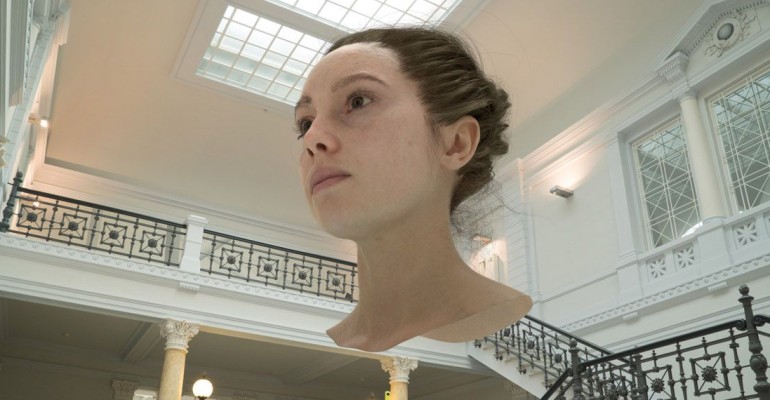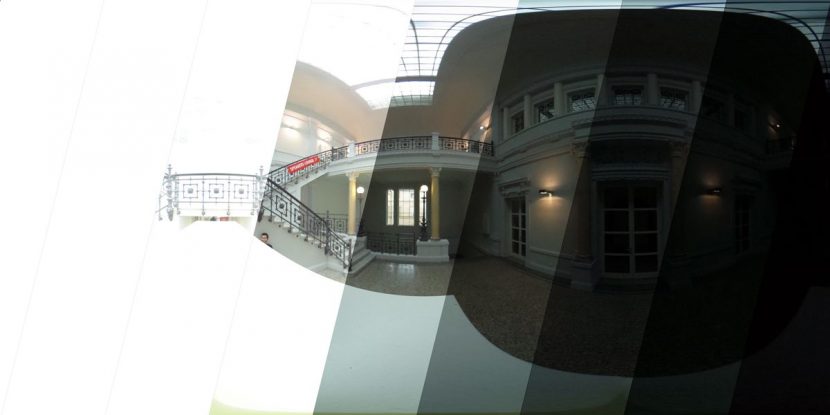HDR 360 Bracket Pro is an app that converts the Ricoh Theta 360 camera into a bracketing 360 HDR remote controlled camera.
The Richo Theta is a fun camera. With the aid of two lenses, two sensors and one button push it takes a full 360 degree image photo. This is then auto-stitched together to produce one spherical mapping you can scroll around or a Lat-Long projection of the world.
The camera is tiny, affordable and fun. It comes with a free app that allows the camera to be triggered remotely from say your iPhone, and thus avoid the somewhat ‘selfie’ view of one holding it – since literally there is nowhere you can stand where you won’t be in the picture.
Watch our run-down of the app in action.
There are some controls in the Theta control panel of that app, but not that many, and mainly the camera suffers from limited dynamic range, which is understandable as it is just a few hundred dollars. On a sunny day the image is great, and the resolution adequate, but for VFX work the dynamic range renders the camera’s output of limited use.
DreamWorks Animation’s Brad Herman (a veteran Kung Fu Panda 2, Transformers, Pirates of the Caribbean: At World’s End), bought one of the cameras and wondered if he couldn’t make it more useful. After all, the one button 360 spherical stitched image is exactly what one wants for lighting reference, sky domes and physically based image based re-lighting. Brad has recently started developing apps so in his spare time he wrote HDR 360.
HDR 360 Bracket Pro is a gift to any on-set visual effects artist, it turns the limited dynamic range of the camera into a full multi-image HDR generating tool. Simply place the camera on set, walk off to the side, hit one button in his app and the camera will take up to 9 bracketed shots – which can then be very easily combined in Adobe Photoshop to an HDR.
There are some limitations – firstly the camera only takes Jpegs, and you can’t control the white balance fully, but you can control it enough. Dr Paul Debevec from ICT at USC advised Brad that the daylight white balance setting introduced the least amount of shift from the base sensor. Secondly, while RAW is ideal for HDRs, the reality is that the process takes just a few seconds and is so easy that it is much more likely you will have time to get an HDR – than having to set up a rig and do a lengthy set of bracketed SLR shots. Such the SLR will produce a higher res final image, but most IBLs are interested in dynamic range not pixel resolution, even a low res 360 with good latitude will work well in most situations.

There are other advantages: for indoor work, outside the USA, the camera works at 60Hz – with no menu option to change that. But Brad has added an option to switch to 50Hz. This is key as images taken with the 50Hz mode in a country like the UK or Australia will look correct, but the 60Hz mode normally produces visible bands in your image which are incorrect and ugly. It also has several fast modes, should you need just a rough HDR or you have less than no time to shoot – the camera can do a set of 3 or a set of 5 images, biased to the highlights, shadows or spread across the board.

The Theta’s stitching also removes most of the actual unit itself – so your HDR will have more information in the lower section of the image than would normally be provided by an SLR – tripod rig.
But the biggest advantage is convenience – you can just always carry the camera in your backpack or even pocket and know that if a non-vfx shot suddenly requires 3D, you can get a useful HDR immediately without a ton of gear, special fisheye lenses or lengthy shoot period of bracketing shots, while the rest of the crew tap their feet. In short, it is EXACTLY what you wanted someone to do if you are a VFX professional who has ever picked up the Theta and played with it.
You can learn more at Brad’s site where there is a link for the camera, the app and even a set of Unity assets of 10 HDRs ready to drop into a game or test.
If you just want the app (since you already have a Theta), it is in the App Store for $US49.99.

Thanks, a interesting bit of tech!
Nice.. I was looking at this a few months ago, wondering if it would be usefull for HDR’s… very cool Mr. Herman build this!